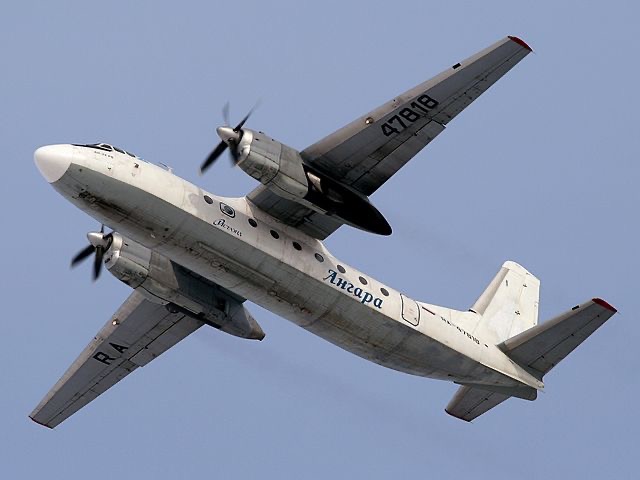A Russian passenger plane carrying 49 people crashed in the country’s far eastern Amur region on Thursday, killing all aboard including five children, authorities have confirmed.
The Antonov An-24 aircraft, operated by Siberia-based Angara Airlines, disappeared from radar whilst attempting a second landing approach at Tynda airport in poor visibility. Rescue helicopters later discovered the burning wreckage on a mountainside approximately 15 kilometres south of the remote town.
All necessary forces and means have been deployed to search for the plane,” Amur region governor Vasily Orlov said on Telegram before the grim discovery. The aircraft was carrying 43 passengers, including five children, and six crew members.
<cite>According to the director of Tynda Airport, the plane caught fire upon impact, and a Mi-8 helicopter crew flying over the area reported no signs of survivors,</cite> Russia’s state news agency TASS reported, citing the regional civil defence and fire safety centre.
The Soviet-era turboprop, built in 1976 according to its tail number, was flying domestic route Khabarovsk-Blagoveshchensk-Tynda when it lost contact with air traffic controllers. The aircraft was nearly 50 years old but reportedly had a certificate of airworthiness valid until 2036.
Preliminary investigations suggest pilot error during landing in poor weather conditions caused the crash. The transport prosecutor’s office reported the plane was attempting a second approach when contact was lost at approximately 4.50pm local time.
According to preliminary data, the plane caught fire mid-air,” emergency services told Interfax news agency. Unverified video footage shot from a rescue helicopter showed the aircraft had come down in densely forested terrain.
Yuliya Petina, an emergency services official, wrote on Telegram: “During the search operation, a Mi-8 helicopter belonging to Rossaviatsiya discovered the fuselage of the aircraft, which was on fire. Rescuers continue to make their way to the scene of the accident.”
The harsh geographical conditions of the region complicated rescue efforts. The crash site lies in dense taiga forests with swampy terrain and no roads, making ground access extremely difficult for emergency crews.
Russia’s Emergency Situations Ministry initially provided conflicting passenger numbers, with figures ranging from 40 to 48 people aboard. The discrepancy was later resolved when Governor Orlov confirmed 49 people total – 43 passengers and six crew.
<cite>the aircraft did not send any distress signals before disappearing, heightening questions over what went wrong.</cite> Weather reports indicated light rain with 9-10 knot southwesterly winds and heavy cloud cover in the area at the time of the crash.
The Eastern Siberian and Baikal-Angarsk transport prosecutors launched an immediate investigation to determine the cause and check compliance with aviation safety regulations. Criminal proceedings have been initiated examining potential violations of air transport safety rules.
Angara Airlines has experienced previous incidents with its ageing An-24 fleet. In 2011, seven passengers died when Flight 9007 ditched in the Ob River after an engine fire. In 2019, two crew members were killed when Flight 200 crashed into a building at Nizhneangarsk airport.
The airline operates a fleet averaging 47.2 years old, consisting primarily of Soviet-era Antonov aircraft. Despite their age, the An-24 remains widely used for regional routes in Russia’s remote eastern territories due to its rugged design suited for harsh environments.
Thursday’s crash highlights ongoing concerns about aviation safety in Russia, where ageing aircraft continue operating on regional routes. Western sanctions imposed after Russia’s invasion of Ukraine have cut off access to modern aircraft, spare parts and maintenance services.
<cite>The plane crashed 15 kilometers from the city of Tynda. There were 48 people on board. All are presumed dead. Technical failure and pilot error are being considered the main causes of the tragedy,</cite> reported Russian Market on social media platform X.
The Antonov An-24 was designed in the 1950s, with over 1,000 units produced. Hundreds remain in service throughout Russia and neighbouring countries, particularly in regions with unpaved runways or severe weather conditions.
Russia’s aviation sector faces mounting pressure as the fleet ages and Western sanctions prevent modernisation. In early 2025, the government slashed aircraft production targets by 50 per cent after failing to meet ambitious goals for domestic manufacturing.
The Aeroprogress Research Centre has warned of a major decline in passenger flights this year due to severe shortages of airworthy aircraft. Only five new planes were built in the past year against a target of over 1,000 by 2030.
The remote Amur region, bordering China and approximately 6,600 kilometres east of Moscow, relies heavily on aviation for transportation across vast distances. The challenging terrain makes air travel essential but also poses significant risks.
Similar incidents have plagued Russian aviation recently. In 2021, an An-26 transport plane crashed in the far east, killing six people. Another An-26 crash in Kamchatka that July killed all 28 aboard.
Angara Airlines, established in 2000 and based in Irkutsk, operates scheduled flights throughout Siberia and to other Russian regions. Like all Russian airlines since 2022, it is banned from European Union airspace.
The crash occurred as Russia struggles to maintain its civilian aviation fleet amid international isolation. The country’s fleet has shrunk to 1,138 aeroplanes and 920 helicopters, with 58 planes retired in 2024 alone.
Rescue teams continue working at the crash site, though the remote location and difficult terrain hamper recovery efforts. Investigators are expected to examine flight data and cockpit voice recorders once recovered from the wreckage.
The tragedy marks another setback for Russian aviation as the sector grapples with maintaining an ageing fleet while cut off from international suppliers and facing declining safety standards.
Follow for more updates on Britannia Daily
Image Credit:
Antonov An-24RV, Angara Airlines – Image by Anna Zvereva, licensed under CC BY-SA 2.0, via Wikimedia Commons.



